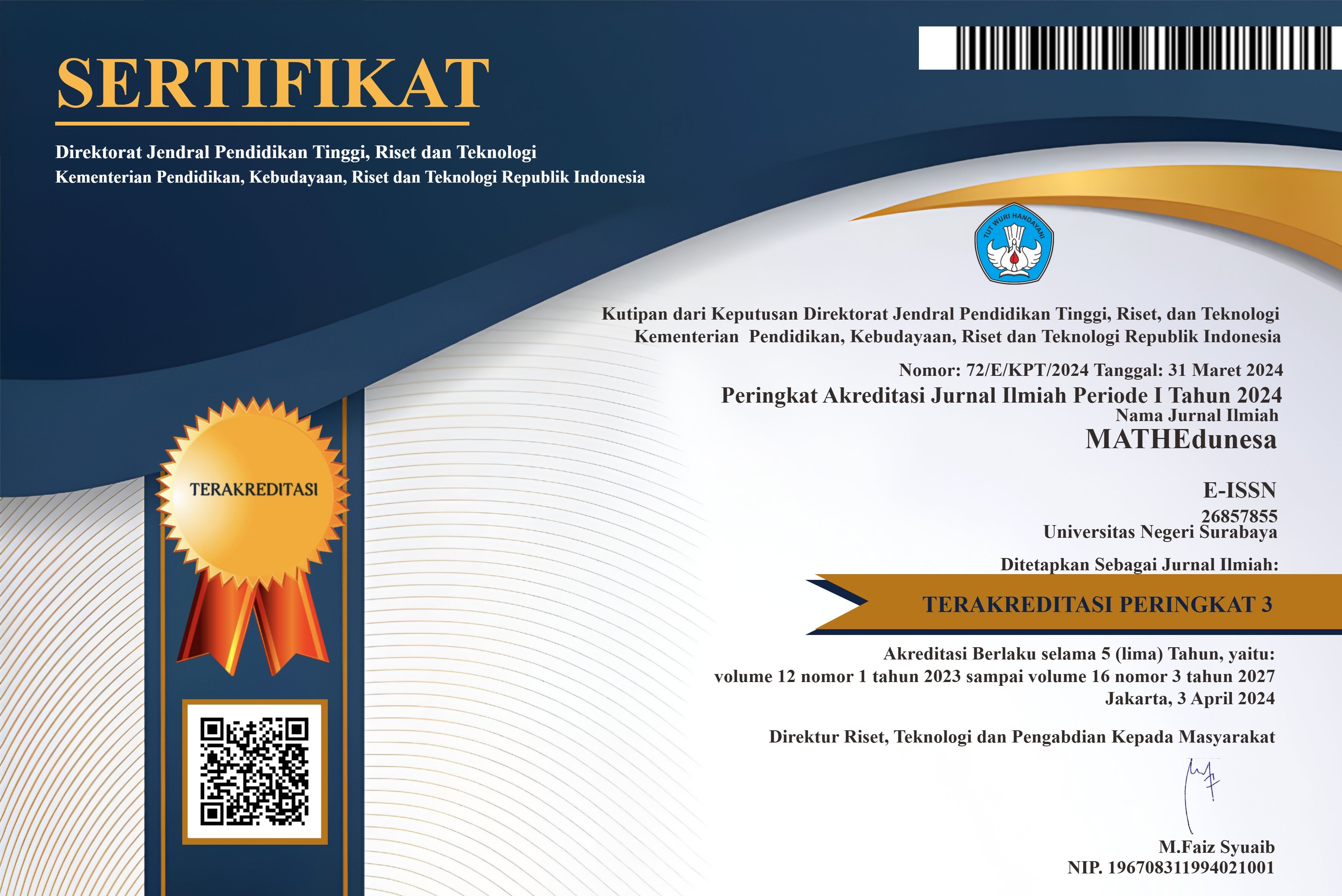Kemampuan Komunikasi Matematis Siswa dalam Menyelesaikan Soal Numerasi Ditinjau dari Self-Efficacy
DOI:
https://doi.org/10.26740/mathedunesa.v13n3.p836-845Abstract
One goal of mathematical learning in an independent curriculum is to communicate ideas with symbols, tables, diagrams, or other media to clarify a situation or problem, and present a situation into a mathematical symbol or model (communication and mathematical representation). Students must have good and clear communication skills. Communication is not only done by question and answer or by discussion between students and other students, communication can also be done by answering math problems. Communication, self-confidence, and mathematics are considered mutually influential. This study is a descriptive study with a qualitative approach aimed at (1) describing students' mathematical communication ability in solving data material numeration problems and the uncertainties reviewed by high self-efficacy (2) to describe students' mathematical communication ability in resolving problems. The results of this study are (1) The mathematical communication ability of students to solve numeration problems with high self-efficacy was stated to be accurate, smooth but incomplete. Meanwhile, students' verbal communication skills in solving numeration problems with high self-efficacy were stated to be accurate, complete and smooth (2) The mathematical communication ability of students to solve numeration problems with low self-efficacy is stated to be inaccurate, incomplete and not smooth, as there are still scribbles and inaccuracies in solving problems. For verbal mathematical communication skills students solve numeration problems with low self-efficacy are also stated to be inaccurate, incomplete, and not smooth. Students can't solve both writing and verbal problems at all.
Downloads
Downloads
Published
Issue
Section
 Abstract views: 150
,
Abstract views: 150
, PDF Downloads: 107
PDF Downloads: 107




